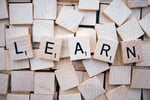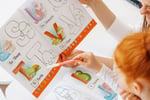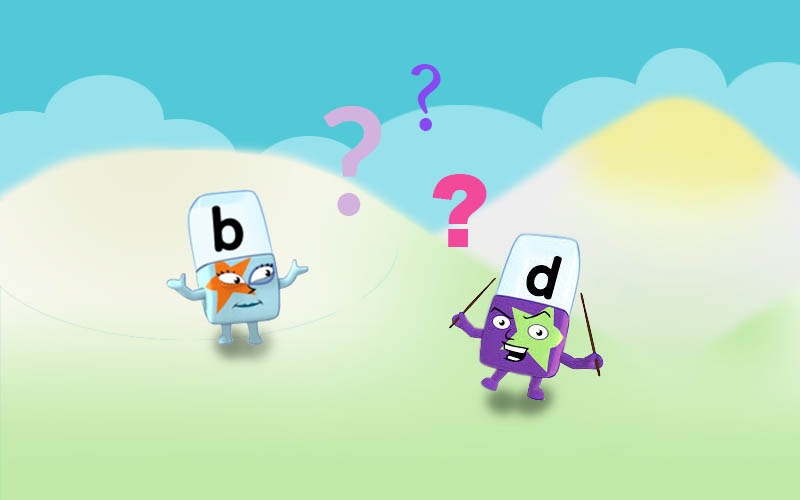
When children learn to read and write, they often muddle up similar-looking letters (and numbers). The most common offenders are:
• v and u;• u and n;
• p and q;
• 1 and 7;
• 2 and 5.
However, the two letters that seem to cause young readers the most confusion are b and d. This is very normal for children up to the age of seven and not a key indicator of dyslexia at this age. Nevertheless, getting your child out of the habit of reversing their bs and ds may need a little practice ...
A quick search on YouTube will bring up dozens of irritating songs aimed at helping your child differentiate between these letters. Should you find them too cloying, try some of these popular strategies to help your child get their bs and ds the right way round:
Write it
They may mix up their bs and ds but children don't generally confuse the upper case versions of these letters (B and D).
As your child learns to write their letters, show them how a b fits inside a capital B. It's like a B with the tummy but without the head.
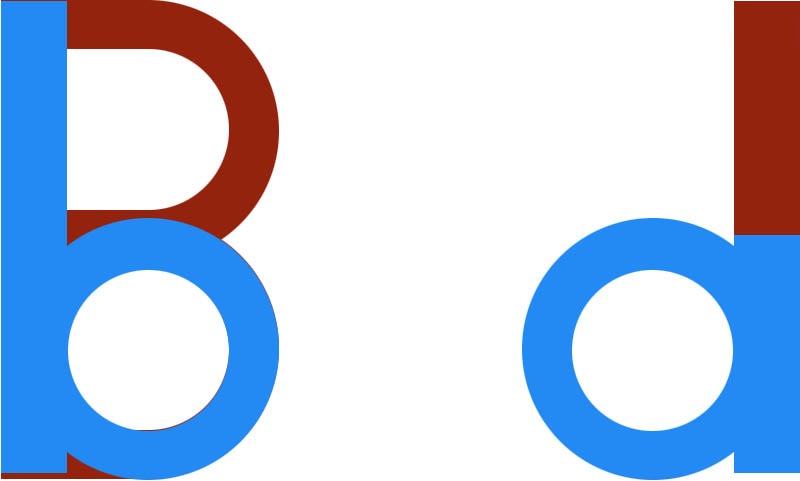
A d on the other hand starts as a lower-case a but continues going up. A b starts high with the stem, whereas a d starts low with an a. As your child learns correct letter formation in their writing, this should help them differentiate between the two letters.
Say it

Every child learns and remembers things differently. Some children may find it helpful to make an association between how they say a letter and how it looks.
When saying the letter b, the mouth starts with its lips tight together in a line, like the stem of a b (albeit orientated horizontally rather than vertically).
When saying the letter d, the mouth starts open, with the lips slightly rounded - like the rounded first part of a d.
Let your child watch themselves say b and d in a mirror. If they can make the association between the 'lip-shut' line of the b and the open-mouth rounded-ness of the d, it may help them remember how the letters are formed.
b e d
Luckily, both b and d come at the beginning of the alphabet - the part that most young children can remember! b comes before d.
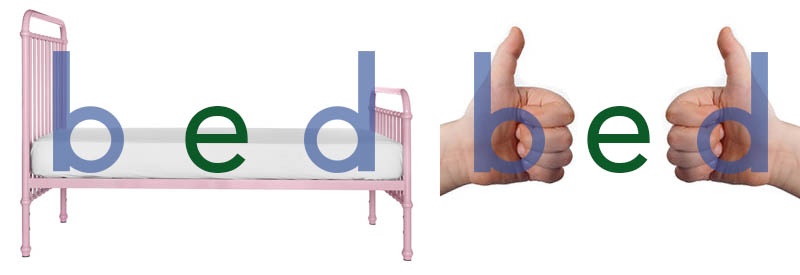
- Visualise a bed with the stalks of the b and the d making the bedhead and the foot of the bed.
b comes before d so b has its stalk to the left, d to the right. - Make a 'thumbs up' sign in front of you with both hands.
The left hand forms a b and the right hand forms a d.
b comes before d. Put an e in the middle and it spells b-e-d.
bat before ball, doorstop before door
Here's a handy aide-memoire:
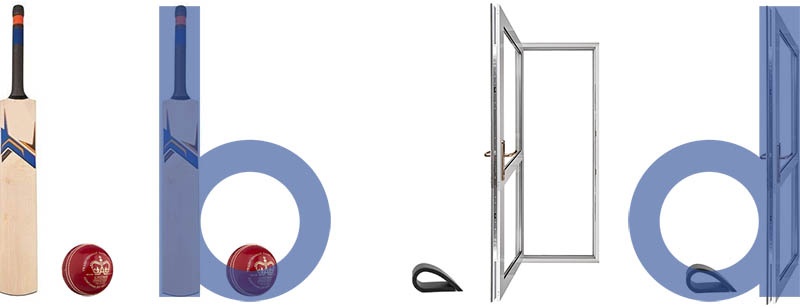
Activities
Here are three simple activities you can do with your child to help them practice their bs and ds:
Flip book
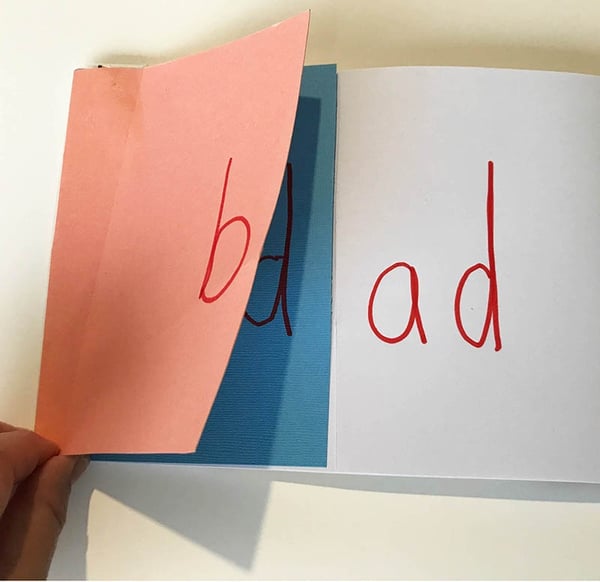
Make a simple flip-book for reading practice with the options of a b and a d on the left-hand side and some word endings that work with both b and d on the right, eg:
- ad
- in
- ig
- ug
- ark
- og
- oom
- one
- ay
- eep
Letter hunt
Cut out a piece of text from a newspaper or magazine (or print from the internet) and give your child a highlighter pen. Give them two minutes to find and highlight as many instances of the letter b (or d) as they can:
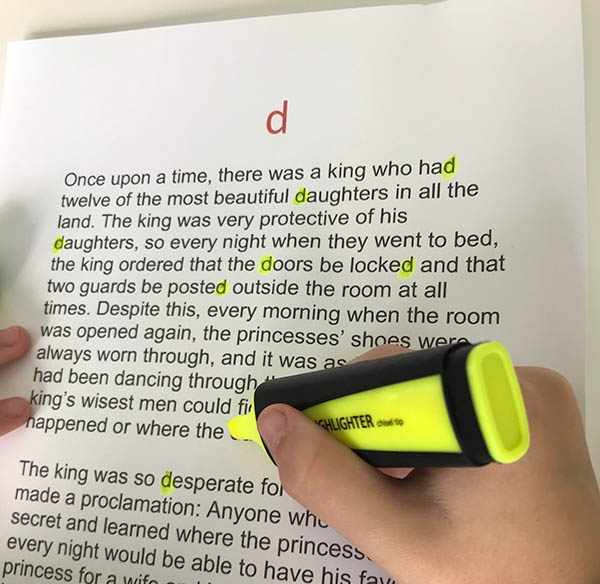
Letter throw
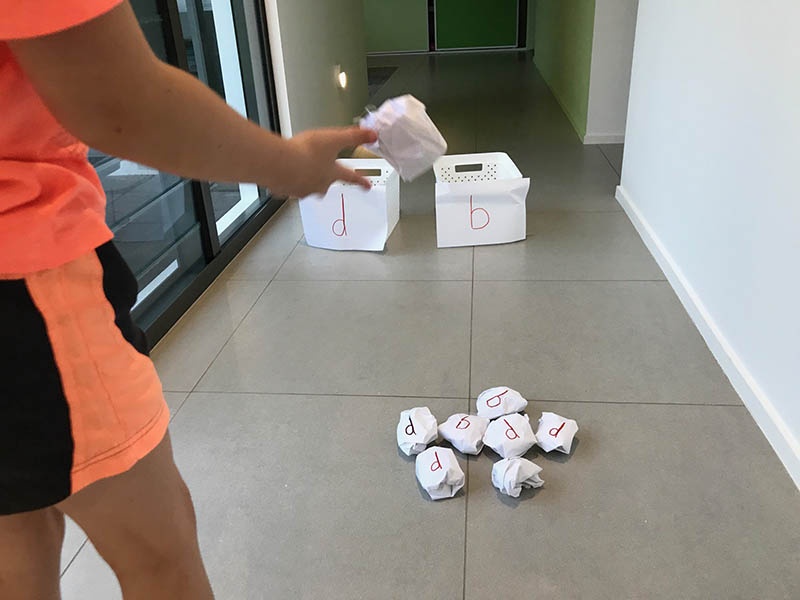
Make some balls from scrunched-up paper and label each with either a b or a d. Label a couple of boxes/containers with a b or d as well. Get your child to throw the letter balls into the correct boxes.




